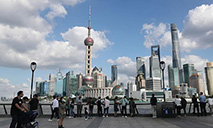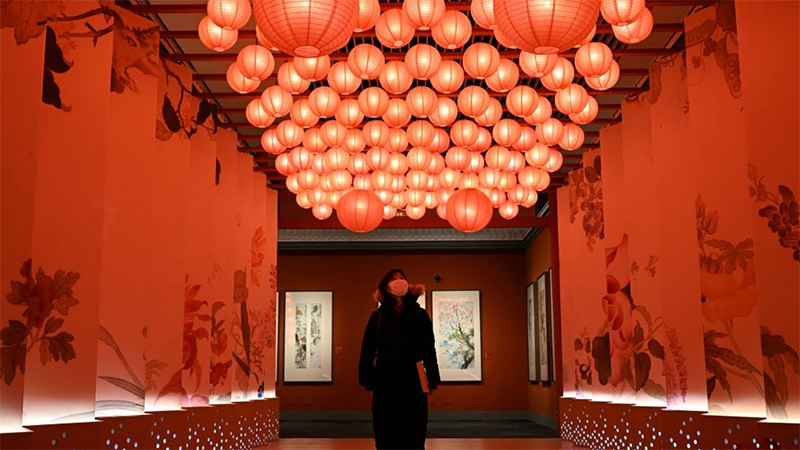Accurate meteorological services to ensure success of Beijing 2022 Olympic Winter Games
To cope with weather risks has always been an important duty of Winter Olympics organizers, and it is also true to the upcoming Beijing 2022 Olympic Winter Games.
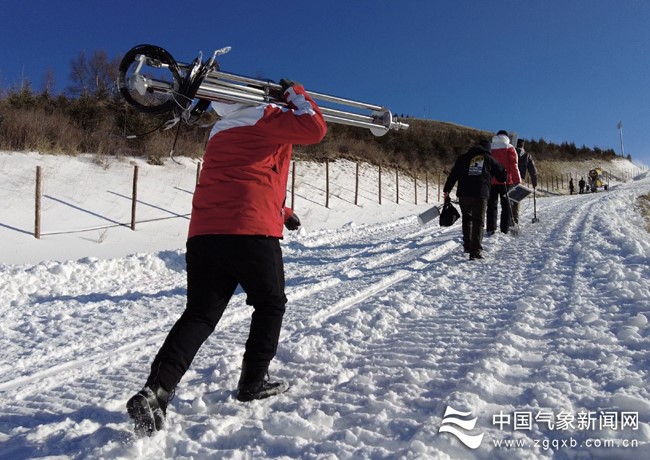
Staff members carry devices to a meteorological station in the Zhangjiakou competition zone of the Beijing 2022 Olympic Winter Games. (Photo by China Meteorological News)
Relevant departments, including the China Meteorological Administration, kicked off preparations for accurate forecast of mountain meteorology and other internationally recognized challenging tasks, soon after Beijing won the bid to host the 2022 Winter Games. They have established teams offering meteorological services, building a meteorological monitoring network on untrodden steeps and summits.
The Beijing 2022 Olympic Winter Games marks the first time that the Winter Games is hosted in a region primarily covered by continental monsoon climate in the recent 20 years.
The competition zones are all situated in mountainous areas with complex terrains, which raises a requirement that all key meteorological conditions must be forecasted within a spatial resolution of 100 meters. This has no precedence in history.
Because of the different demands of the games for meteorological data, the Beijing 2022 Olympic Winter Games has tailored meteorological services for every single venue and event.
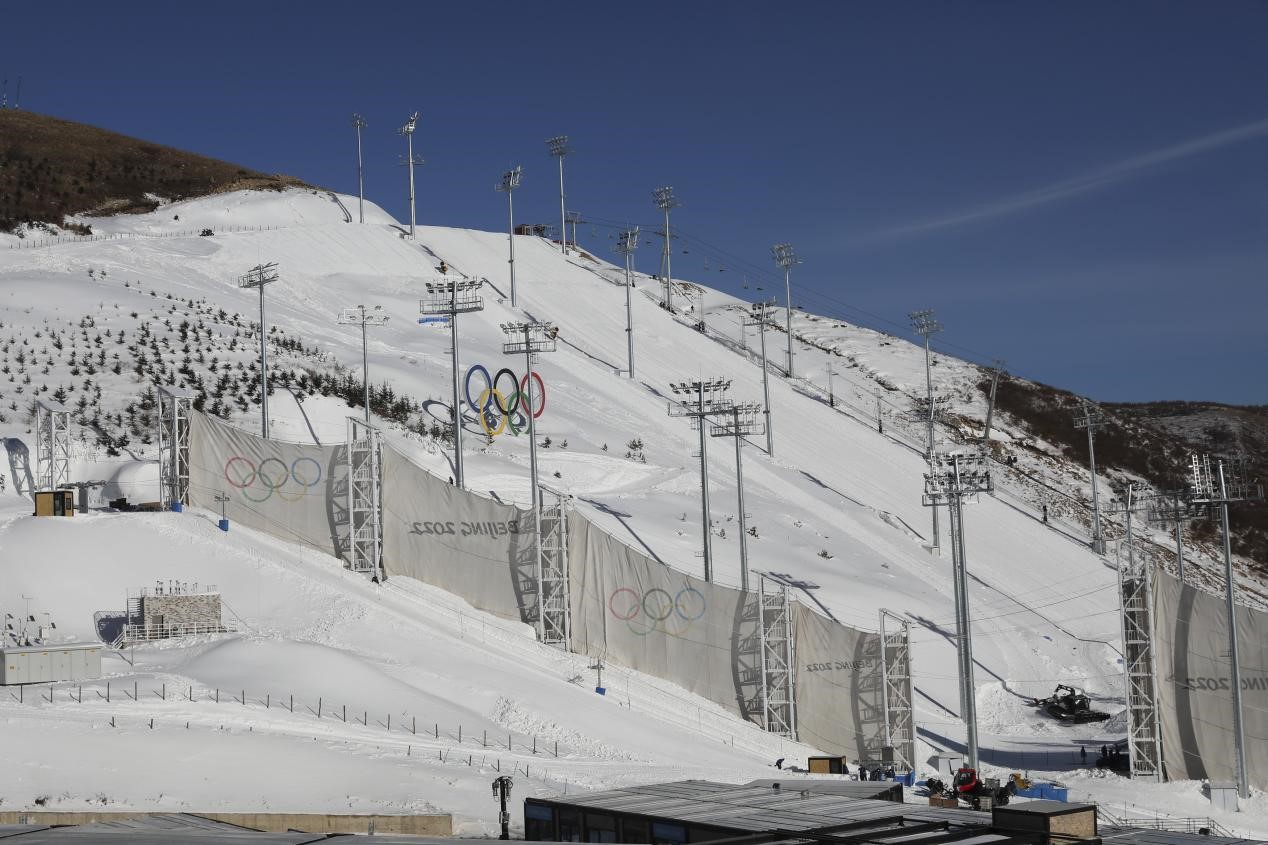
Photo taken on Jan. 19, 2022 shows a wind shield installed for freestyle aerials events at the Genting Snow Park in the Zhangjiakou competition zone of the Beijing 2022 Olympic Winter Games. (People’s Daily Online/ Wu Diansen)
Research teams have been established to study the features of the weathers and climates in complicated mountainous areas, and meteorological forecast teams have gained plentiful experiences after carrying out forecast drills for five consecutive winters. These efforts will all contribute to the success of the Beijing 2022 Olympic Winter Games.
Monitoring is the first step of meteorological forecast. Meteorological observation stations have been built to monitor meteorological conditions in and around competition zones, forming a multidimensional monitoring network together with meteorological satellites, radars and other unconventional detectors. They can obtain comprehensive real-time meteorological data in competition zones and lay a solid foundation for further improvement in forecast capabilities.
The Genting-1 observation station is one that was built with a lot of efforts in the Zhangjiakou competition zone. It sits on top of the venue holding freestyle aerials events and around it are steep and slippery slopes with an angle of over 45 degrees. Even snowmobiles cannot get to the station. To build and maintain it, relevant staff members have to climb on the slopes wearing crampons, with each one of them carrying devices that weigh over 10 kilograms.
A total of 441 observation facilities have been built in the three competition zones of the Beijing 2022 Olympic Winter Games, including the above-mentioned meteorological stations. Together, they constitute a multidimensional monitoring network that covers a wide range of meteorological factors with a second-level response.
State-of-the-art observation devices and top-notch technologies are providing strong support for meteorological forecast, too. China has successfully developed key technological solutions such as the model of high-precision weather forecast, the model of rapid integration of multi-source meteorological data, and the model of AI-correction for prediction error. It has also launched the Rapid-refresh Integrated Seamless Ensemble system that is able to offer 10-day forecast in the regions near mountainous venues by grids of 100m*100m, as well as 10-day forecast in key spots for the Winter Games at fixed time and locations with fixed quantities.
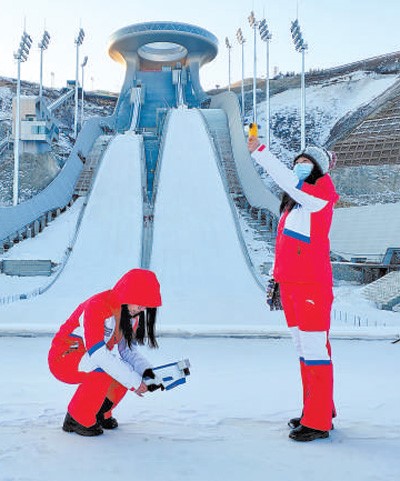
Meteorological service staff collect data in the Zhangjiakou competition zone of the Beijing 2022 Olympic Winter Games. (Photo courtesy of Hebei Meteorological Service)
According to Chen Mingxuan, who heads a national meteorological plan that helps China hold a high-tech-based Olympics, weather forecast for previous Winter Olympic Games was usually made within a spatial resolution of 1,000 meters and updated every half or one hour. “The forecast grid for the upcoming Beijing Winter Olympics has been narrowed to 100m*100m or even 67m*67m at least, and information is updated every 10 minutes,” he said.
AI-powered weather forecast will also be applied for the first time in the history of Winter Olympics, which is expected to re-correct forecasts after reinterpreting massive observation and forecast data. It will further improve the precision of weather forecast for the Winter Games.
So far, the national meteorological plan headed by Chen has been incorporated into a list of demonstration projects of the World Meteorological Organization, contributing Chinese experiences to relevant technological development and application in the world.
Photos
Related Stories
- 95 athletes selected for Finnish team at Beijing Winter Olympics
- Sweden confirms largest team ever for Beijing Winter Olympics
- Albanian national flag delivered to athlete for Beijing Winter Olympic Games
- Beijing 2022 adjusts criteria to make COVID test positive results stricter, a ‘balance between epidemic prevention and Games’
- One athlete to represent Kyrgyzstan at Beijing Winter Olympics
- China plans targeted measures for air quality during winter games
Copyright © 2022 People's Daily Online. All Rights Reserved.







